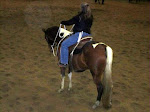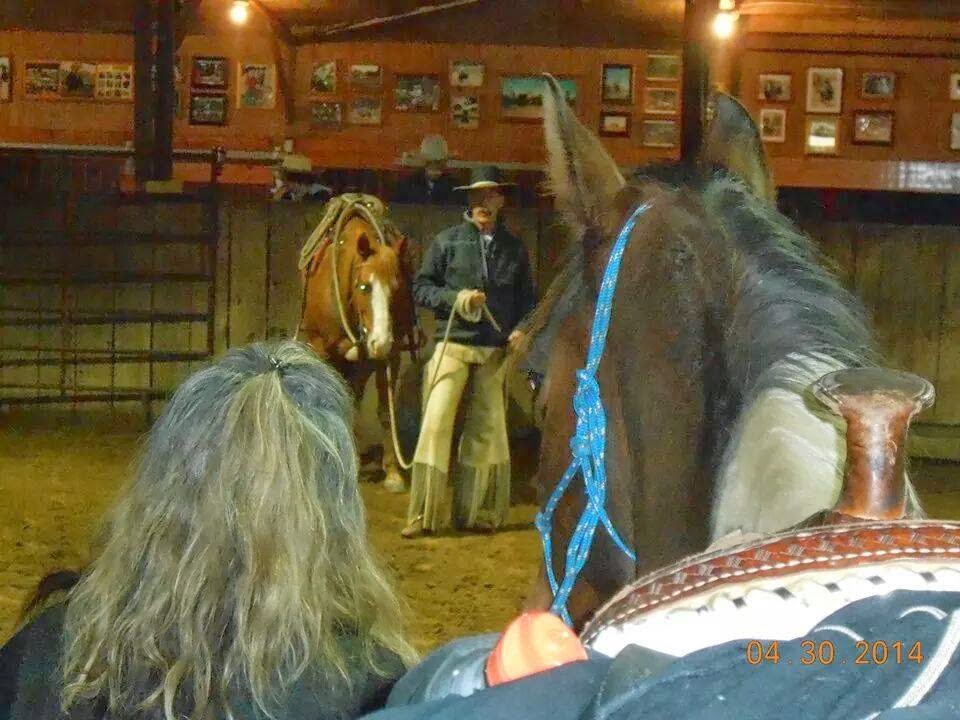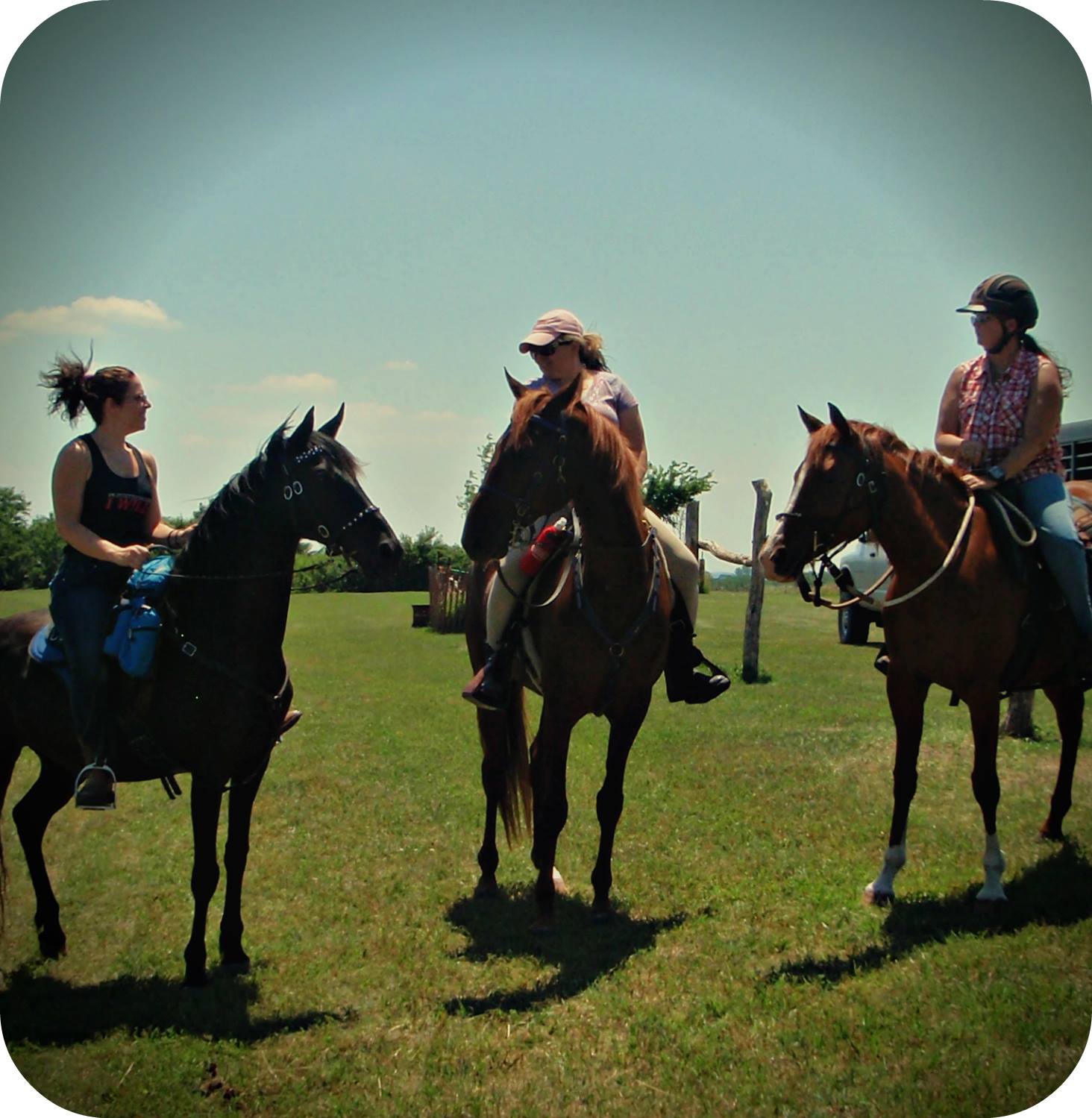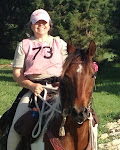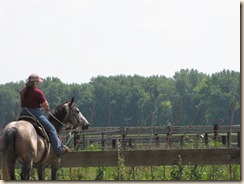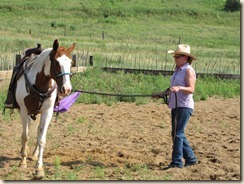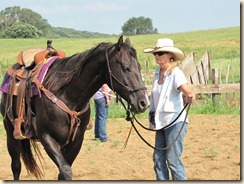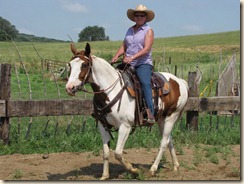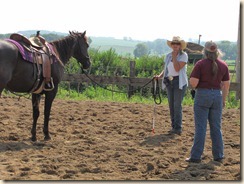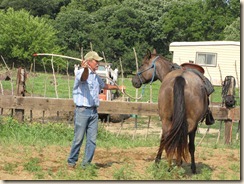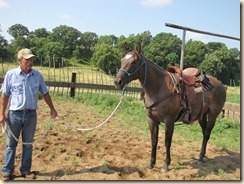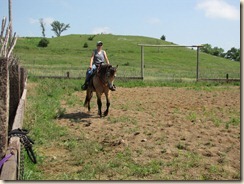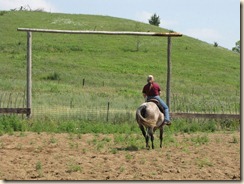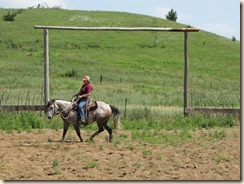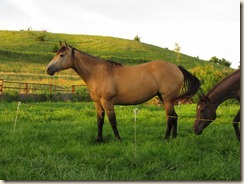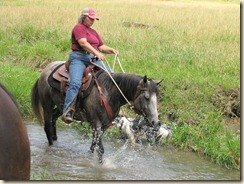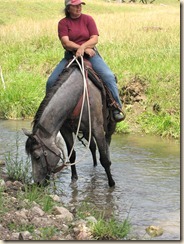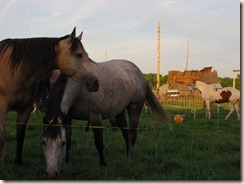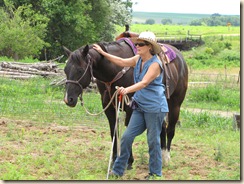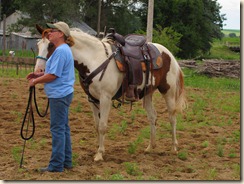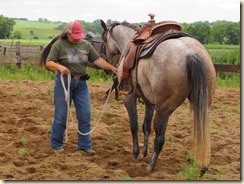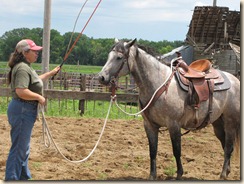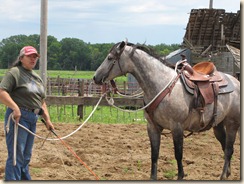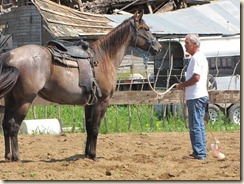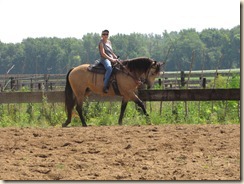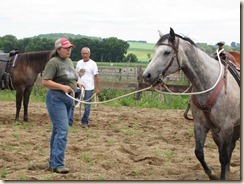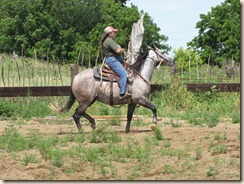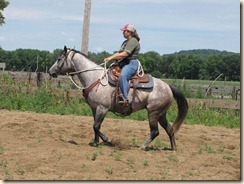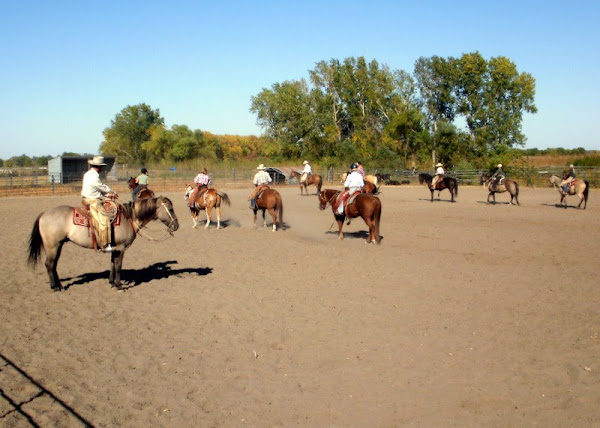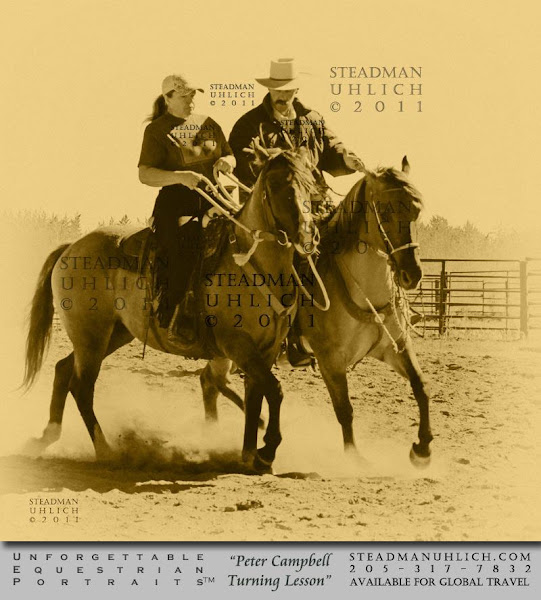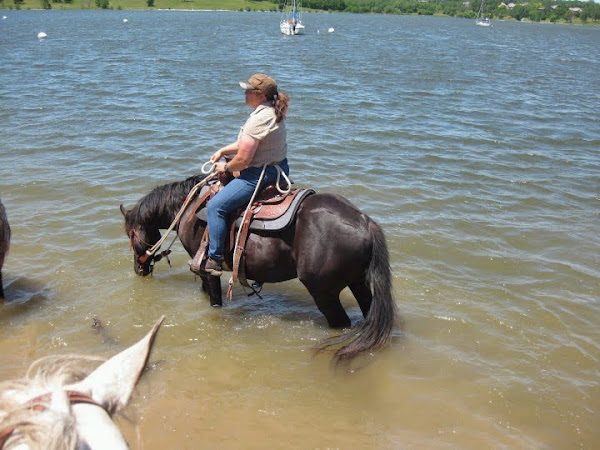Three quarters through Day 1, nobody likes me very much. It’s for all the right reasons. People are struggling to absorb the information they can feel the impact of but not quite know how to get there for themselves. There is the leveling of pride that takes place as a person starts to realize the horse is saying it all. You can explain all you want about why a horse does or does not do a thing but the horse has already said and you may be unhappily surprised when you hear what that is. Listen to the horse. You can say it all day long and think you mean it but when it hits you in the guts as true, there is a solid thud.
By the end of Day 1, people were making changes. They hung in through the hard parts. Asking for what they wanted from the horses and gaining understanding that they might have to wait on the horse giving up some answers other than what they were seeking. The horse might try a lot of things on the way to figuring out what the right answer is and that’s okay. When it came together, even if only for moments, I didn’t have to tell them about it, they felt it for themselves.
I have been told the learning does not happen at a clinic, that is where the teaching takes place. Learning comes when you go home and try to recreate what happened at the clinic. That is why it is so necessary a person becomes aware of what the right things feel like. It’s unmistakable.
A lady came with her rock star spotted Mo Fox Trotter. This horse was kind, gentle and knew everything. I told her she was in the cat bird’s seat for a horsemanship journey with a horse that will tell you just as soon as you get a thing right. She was actually there, more to get an answer for her husband’s horsemanship than for her own. End of Day Two, I think she had those answers though they were not maybe the ones she thought she would come for, and hopefully, some of her own, as well.
I loved how the morning of Day Two saw people moving with purpose and determination. Day One, no one seemed to care much about when we got started but of course, they had no idea what was about to happen to them ![]()
Day Two, horses and people stepped into the arena, new life in their feet and faces. That black gelding? Owner reports he awaited her at the gate. They both had such happy and peaceful looks on their faces. Later on, I reminded her that old habits will die hard for them both, but they can remember this, and always start over . . . always.
I went around and worked with each person on their groundwork. I wanted them to see their horse, reaching equally in a circle with all four feet, how that outside hind tracks out a little and the inside hind tracks to the outside fore with a gentle bend to the entire body. Once the horse is there, it’s an easy matter to ask them to take the hip over. Once that happens, it’s an easy matter to tip the nose back the other way, shaping them to bring the front end through. Easy, right?
Well, easier than the day before, that is for sure. They had performed this maneuver more successfully under saddle in the afternoon. The idea came alive these maneuvers can be accomplished not only in the saddle but on the ground and vice versa depending on where the need was at, for the horse, for the moment. Or for us.
The last horse to play with before I turned to Slippin, who was quietly waiting at the wall (we had discussed the change in her from the previous day) was the green filly who hadn’t been ridden yet. The day before, she had struggled with being asked to move whether she really wanted to or not, hadn’t known how to release to pressure, thought as most young horses do that going through it to escape was her best plan.
Without having to get ugly with her, I got across how simple it could be. I pick up a line, you feel something on your face. Let me direct your feet. I promise, I will allow you to go when I send you, I will stop cuing when you are trying, I will release pressure when I have said stop, and you do that. Even if you just try, I will give back to you.
Her eyes were brightly alert, no fear in them, but the life was there. Can’t train a horse if you cannot move it’s feet. She moved forward softly and sweetly off the line. Handled the flag, handled everything. It was time to ride.
We had a big open arena, no round pen. I am pretty sure a person could have just climbed up on her, asked her for some simple things and rode her around. I was not going to risk being wrong. Not for myself or for her owners.
We had Doats step up, standing in the stirrups, doing all the stuff the filly was already accustomed to. She’d been sat upon, but not asked to move with the rider aboard, and moving can change a lot of things.
Filly was dead comfortable with the entire process. She’s never been hurt or overly troubled her whole life and it made for a simple process here. I kept her on a 22 ft line. We moved her hip over so she could feel Doats up there. Had the filly get a good look out of both eyes.
Sent her around in some untroubled circles. Doats started adding the gas pedal, and then after a few revolutions, she picked up her line, moved the hip over and took the horse through the other way. They are off to a nice start with Feisty and I think they have a decent notion of how to keep on going with her.
It was the coolest thing ever watching people ride, faces serious but not stressed. Horses focused but not upset.
Slippin had made changes over night, as well. She rode nicely in the arena, we found some of her buttons, moving her hip around in a nice turn on the forehand, she grew ever more light and athletic under me.
It wasn’t til we left the arena for a wind up trail ride that she and I found trouble again. That we did, but we survived it and both of us got our brains through moving her feet. The group and I waded the creek, stepped off banks and scrambled up same. Climbed hills, slid down slopes, weaved trees, played the arena games on the trail and had the very best of times. The black horse that I was the most concerned about stayed the happiest. My horse began the trip anxious and came back a trooper. All of these wonderful photographs are courtesy of Dorrine “Doats” Norby. My only sorrow is that we don’t have more of her and her lovely buckskin mare, Knosie.
It doesn’t get much better than this. Until next time.

